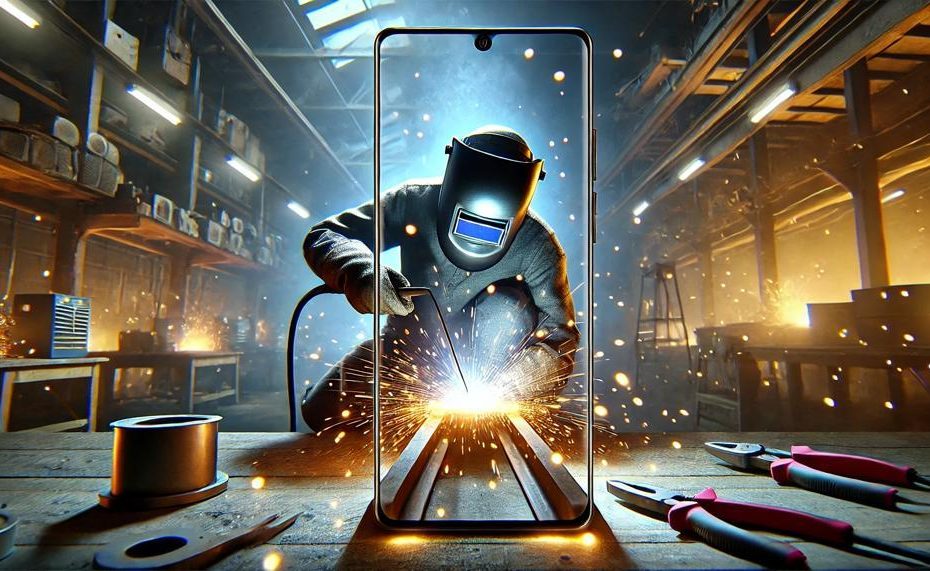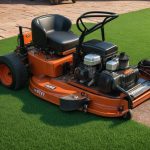In the dynamic world of welding, where precision meets rugged artistry, flux core welding stands out as a versatile and robust technique that has revolutionized the way we join metals. This process, intriguing for both its simplicity and complexity, offers a fascinating entry point into the broader universe of fabrication and repair. Imagine wielding the power to fuse metal with a technique that’s both accessible to beginners and deeply respected by seasoned professionals. That’s the allure of flux core welding.
As we dive into the heart of this captivating subject, our journey will uncover:
- The Basics of Flux Core Welding: Understanding what flux core welding is and how it differs from other welding techniques.
- The Equipment: A close look at the tools of the trade, from welding machines to wire types, and how to select the right ones for your project.
- Advantages and Applications: Discover the unique benefits that make flux core welding ideal for outdoor work, heavy-duty construction, and DIY projects alike.
- Challenges and Solutions: Navigating common pitfalls and how to overcome them, ensuring smooth, high-quality welds.
- Practical Tips and Techniques: Enhancing your skills with expert advice and practical strategies for successful flux core welding.
This introduction aims to spark your curiosity and equip you with key insights into the world of flux core welding. Whether you’re a novice looking to start a new hobby or a professional aiming to refine your technique, this article promises a comprehensive exploration of a skill that’s both an art and a science. Let’s ignite the torch of knowledge and delve into the fascinating intricacies of flux core welding together.
Contents
- 1 What Is Flux Core Welding?
- 2 The History of Flux Core Welding
- 3 Understanding the Flux Core Welding Process
- 4 Advantages of Flux Core Welding
- 5 Versatility in Materials: What Can Be Welded with Flux Core?
- 6 Limitations and Safety Precautions of Flux Core Welding
- 7 How to Prepare for a Flux Core Welding Project
- 8 Conclusion
What Is Flux Core Welding?
Flux core welding, known technically as flux-cored arc welding (FCAW), employs a unique method using a special tubular wire filled with flux to fuse metal pieces together. This welding method harmonises the simplicity of metal inert gas (MIG) welding with stick welding’s versatility and productivity. Here’s how it lays out for beginners and the benefits it brings:
| Characteristic | Explanation | Benefit |
| Flux-filled Wire | A wire compound with a core of flux that protects the weld pool. | Eliminates the need for external shielding gas, reducing contamination risk. |
| Self-shielded and Dual-shielded Types | Varieties tailored for either everyday tasks (self-shielded) or industrial uses (dual-shielded). | Flexibility to work in different environments and on various project scales. |
| High Deposition Rate | Faster than MIG welding due to a high volume of material deposited. | Speeds up the welding process, saving time and increasing productivity. |
| Equipment Specificity | Requires certain tools: a power source, torch, and wire feeder. | Ensures precision and quality, though initial setup may be higher in cost. |
| Filler Metal Varieties | Comes in various classifications to match different base metals. | Provides versatility in welding different materials effectively. |
| Outdoor Suitability | Produces its own shielding, allowing for outdoor use without worry. | Ideal for external projects or in windy, unsheltered environments. |
| Toxic Fumes | Can emit hazardous gases during the welding process. | Requires ventilation but allows for strong, clean welds once safety is ensured. |
In simple terms, flux core welding stands out for its convenience and efficiency. It’s perfect for newcomers and pros working outside or with materials that are less than pristine. While it’s a tad pricier due to the special wire and equipment, the speed and flexibility you gain make it a solid choice for many welding tasks. Just remember, safety first: proper ventilation is crucial due to the fumes.
The History of Flux Core Welding
The inception of flux core welding traces its roots to the quest for a more versatile and robust welding method. Stemming from the shortcomings of Metal Inert Gas (MIG) welding, inventors sought a solution that married the strengths of MIG and Stick welding, leading to the birth of flux core welding. This technique harnesses a self-shielded wire with a flux coating. This innovative wire serves a dual purpose – it acts as an electrode while the flux coating provides necessary protection against contamination.
Two distinct variants of flux core welding emerged: Flux-Cored Arc Welding (FCAW) and dual shielded FCAW. FCAW excels in environments where outdoor welding or dealing with dirty metals is inevitable, while its dual shielded counterpart ramps up the speed and penetration depth, ideal for industrial applications.
The flux core welding apparatus consists of a power source, a torch, a wire feed mechanism, and the crucial self-shielded wire. Matching the wire to the base metal is essential for ensuring consistent welding properties. The technique involves a drag method, where the gun is pulled at a 5-15 degree angle, with parameter adjustments based on the welding position.
Key advancements in flux core welding include:
- Versatility in Material and Thickness: Adaptations now allow for welding a broader range of materials and varying thicknesses.
- Environmental Suitability: Its ability to weld effectively outdoors and in windy conditions, sans external shielding gas.
- Speed and Efficiency: It accelerates the welding process, catering to fast-paced industrial demands.
| Year | Advancement | Impact |
| Early Development | Introduction of FCAW | Enabled outdoor and dirty metal welding |
| Later Development | Introduction of Dual Shielded FCAW | Higher speed and penetration |
| Ongoing | Material and Thickness Variations | Broadened application range |
Flux core welding’s journey is a tale of continuous innovation, driven by the need to conquer challenging welding scenarios.
Understanding the Flux Core Welding Process
Understanding the Flux Core Welding Process dives deep into a robust method known for its versatility and efficiency. At its core, flux core welding (FCW) harnesses a unique approach, utilizing a wire electrode that’s encased in flux to meld two pieces of metal. This method stands out from other welding processes through its distinctive features and applications.
| Characteristic | Flux Core Welding (FCW) | Other Welding Processes |
| Shielding Gas | Self-shielded versions eliminate the need for external gas, while gas-shielded types require it. | Typically rely on external shielding gas. |
| Application Settings | Especially favoured in outdoor, industrial settings like shipbuilding, construction. | Often more limited by environmental conditions. |
| Equipment Complexity | Less equipment needed, easier to learn. | May require more complex setups and greater skill. |
| Material Thickness | Ideal for thicker materials (3/16″ or greater). | Varies, but some processes are less suited for thick or outdoor materials. |
| Speed and Efficiency | Known for faster welding speeds. | Speed can vary widely, often slower. |
In essence, FCW thrives where other processes might falter. Its adaptability to windy, outdoor conditions and ability to handle thicker materials without a hitch make it a go-to for heavy-duty tasks. The wire electrode’s consumable nature, combined with the protective slag generated by the flux, ensures a clean, contaminant-free weld. Plus, with options for both self-shielded and gas-shielded variations, it offers flexibility unseen in many traditional welding methods.
Safety, as ever, remains paramount. Welders must don appropriate gear to shield against hazards. And when it comes to gas choice for those opting for gas-shielded FCW, a blend of 75% Argon and 25% CO2 is often championed for its superior arc stability and penetration capabilities.
Through its balance of simplicity and strength, flux core welding not only makes heavy industrial projects more feasible but also brings a certain rugged elegance to the craft of welding.
Advantages of Flux Core Welding
| Benefit | Description | Comparison |
| Enhanced Productivity | Flux core welding boasts rapid deposition rates, accelerating project completion. | Outpaces stick and TIG welding in speed, perfect for hefty projects. |
| Versatile Positioning | Capable of welding in any position, be it flat, vertical, or overhead. | Surpasses the limitations of certain traditional methods, enhancing adaptability. |
| Cost Efficiency | Eliminates the need for external gas shielding, trimming overall expenses. | More economical than methods dependent on external gases, due to lower material and operational costs. |
| Superior Penetration | Flux composition aids in achieving deeper weld penetration for robust joins. | Leads to stronger welds compared to some methods where penetration might be less optimal. |
| Outdoor Suitability | Impervious to windy conditions, ideal for outdoor or remote projects. | Offers an edge over gas-shielded processes that struggle with atmospheric elements. |
| Metal Versatility | Applicable to a broad spectrum of metals without needing specific gases or electrodes. | Provides more flexibility than techniques that necessitate particular materials or conditions for different metals. |
Flux core welding shines as a beacon for those seeking efficiency and versatility in their metal joining ventures. Its aptitude for ramping up productivity without sacrificing quality or durability makes it a stalwart in the realm of welding, particularly for industrious projects where time and cost hold the reins.
Whether battling the gusts on an open field or navigating the complex geometries of intricate structures, this method stands unfazed, ready to deliver robust welds across a kaleidoscope of metals.
Its simplicity in setup and operation, coupled with the elimination of cumbersome gas tanks, not only streamlines the process but also opens doors to realms previously thought unreachable by traditional welding paradigms.
Versatility in Materials: What Can Be Welded with Flux Core?
Flux core welding, known for its robustness and adaptability, welds a diverse range of materials. Its specialty lies in tackling metals that face harsh conditions or require strong, reliable joins. Below is a detailed look at the materials compatible with flux core welding.
Steel and Its Variants
- Mild Steel: The most common candidate for flux core welding, ideal for general fabrication and repairs.
- High Carbon Steel: Achievable with specific flux core wires designed to cope with the steel’s hardness.
- Stainless Steel: Requires a specific type of flux-cored wire to prevent corrosion and maintain strength.
Cast Iron
- Weldable with nickel-based flux core wires, though it demands precise heat control to avoid cracking.
Aluminum
- Challenging to weld due to its thermal conductivity and oxide layer. Specialized aluminum flux core wires are necessary.
Exotic Metals
- Materials like nickel alloys can be welded using flux core welding with appropriate wire types designed for high-temperature resilience.
Limitations and Safety Precautions of Flux Core Welding
Flux core welding, while popular for its versatility and strength, carries inherent risks that necessitate careful attention. Understanding and mitigating these hazards are crucial for a safe welding environment.
Hazards
Fumes and Gases: The process emits harmful fumes containing manganese, chromium, and nickel.
UV Radiation: The intense light from the welding arc can harm skin and eyes.
Fire Risks: Sparks and hot materials can ignite flammables.
Electrical Hazards: Faulty equipment or improper use can lead to electric shocks.
Precautions
- Ventilation: Ensure the workspace is well-ventilated to dispel hazardous fumes.
- Protective Gear: Utilize a respirator, welding helmet, long-sleeved clothing, and gloves.
- Safety Checks: Regularly inspect the equipment for damage or wear.
- Fire Safety: Keep flammables away and have extinguishing methods at hand.
| Hazards | Effects | Precautions |
| Fumes and Gases | Respiratory issues, long-term health problems | Proper ventilation, use of respirators |
| UV Radiation | Skin burns, eye damage | Protective clothing, welding helmet |
| Fire Risks | Potential for fire outbreaks | Clear area of flammables, ready fire extinguisher |
| Electrical Hazards | Electric shock, equipment failure | Regular equipment checks, proper grounding |
Welding should always be executed with a clear understanding of these risks. It’s not just about donning the right gear; it’s about cultivating a mindset of safety first and always. Whether you’re a seasoned welder or a greenhorn, remember, a well-prepared welder is a safe welder.
How to Prepare for a Flux Core Welding Project

To gear up for a flux core welding venture, it’s paramount to heed specific safety measures to fend off any untoward incidents. Here’s a breakdown to ensure you’re well-prepared and can tackle your project with confidence, whilst keeping safe:
| Ensure Adequate Ventilation | Position exhaust fans or keep doors and windows ajar to whisk away harmful fumes and gases, safeguarding your lungs from metal oxide nasties. |
| Don Personal Protective Equipment (PPE) | Kit yourself out in a welding helmet with a dark filter lens, robust welding gloves, fire-resistant clothing, and sturdy closed-toe shoes. Don’t skimp on a respirator to keep those pesky particles at bay. |
| Equipment and Area Inspection | Give your gear a once-over, checking for frayed cables and ensuring everything’s grounded. Make your workspace spark-proof by clearing flammable gubbins and clamping your workpiece like it’s going nowhere. |
| Keep a Fire Extinguisher Handy | A vigilant welder always has a fire extinguisher within reach. You never know when sparks might fly a tad too enthusiastically. |
| Skill Up | Nothing beats knowing your onions. Make sure you’re up to snuff with your welding prowess and the equipment you’re buddying up with for the project. |
Embarking on your flux core welding project with these safety measures in place not only ensures your physical well-being but also sets the stage for a successful and seamless welding experience.
Conclusion
Finally, flux core welding proves to be a strong and flexible tool in the vast field of metal production. It provides a balance between ease of use for newbies and advanced features for experts that is uncommon in the making world. The roots of this technique go back to the search for a more flexible way to weld. It has grown into a strong method that includes the best parts of MIG and stick welding.
Its creative use of a flux-filled wire eliminates the need for external gas insulation, making it better for use outside and providing protection from the weather while greatly speeding up the welding process. From its humble beginnings to its widespread use in commercial, outdoor, and do-it-yourself projects, its history shows how useful and adaptable it is.
Also, flux core welding is great because it can join a lot of different materials, from mild and stainless steel to rare metals, making sure that the welds are strong in all kinds of situations. However, it comes with some problems, such as dealing with dangerous fumes and the need for strict safety measures. Despite these problems, welders can fully utilize flux core welding if they make sure there is enough air flow, wear the right safety gear, and follow all safety rules.
As we learn more about flux core welding, it becomes clear that it’s more than just a way to put metals together. It’s a link between the raw, natural power of manufacturing and the fine detail of skilled workmanship. Anyone who wants to learn how to weld or improve their existing skills can use flux core welding to open up new options that aren’t possible with other ways.





